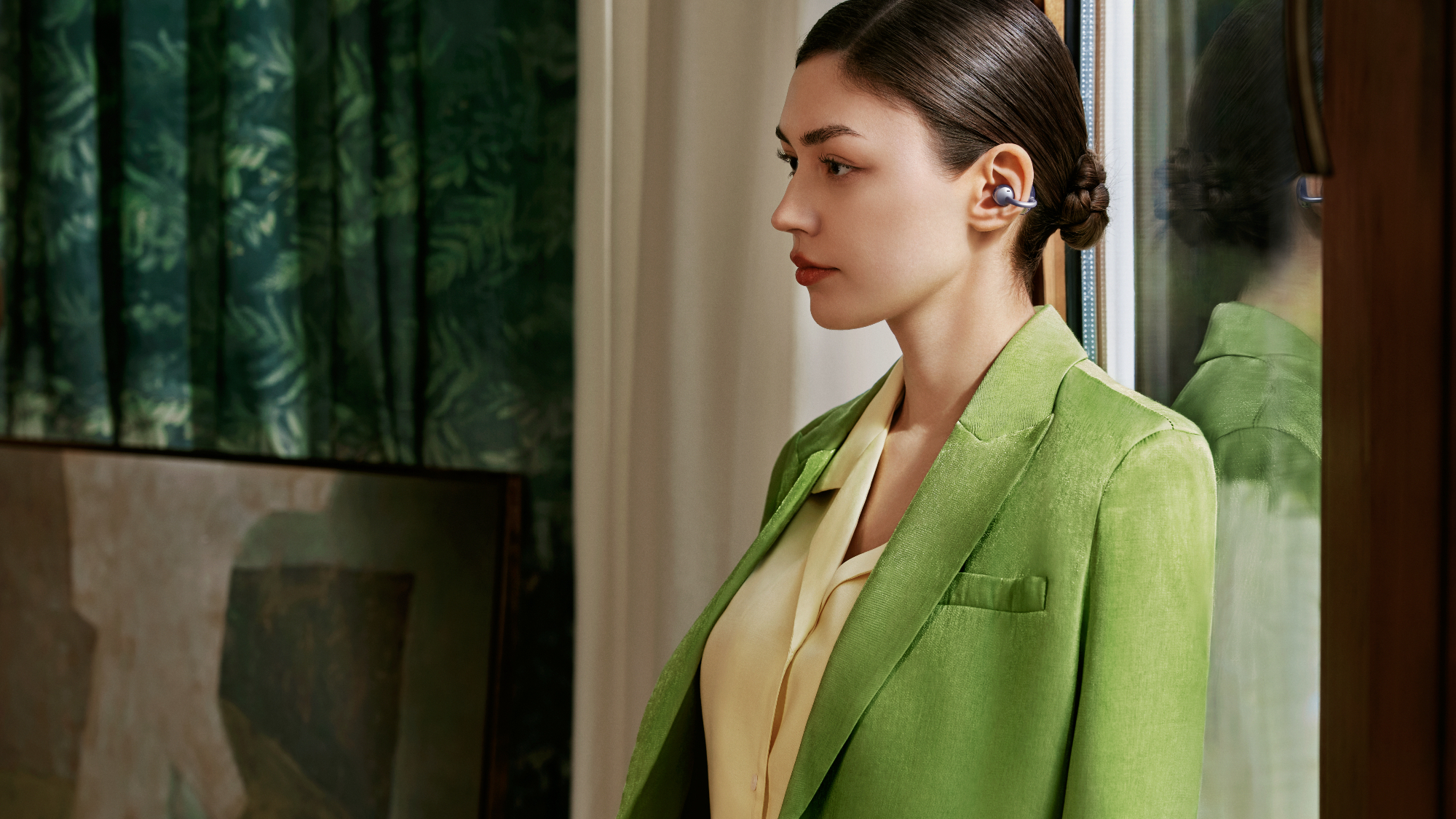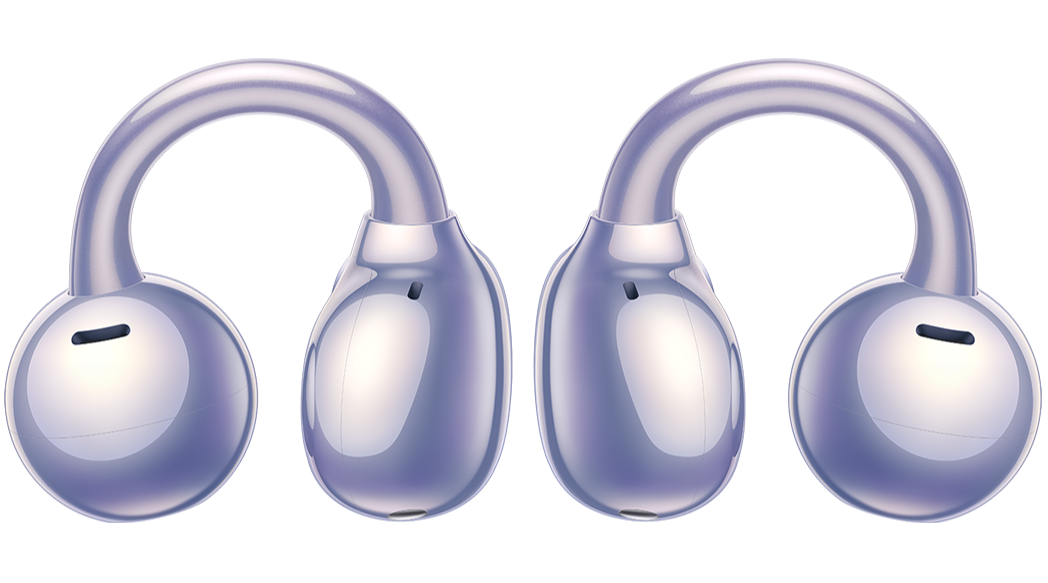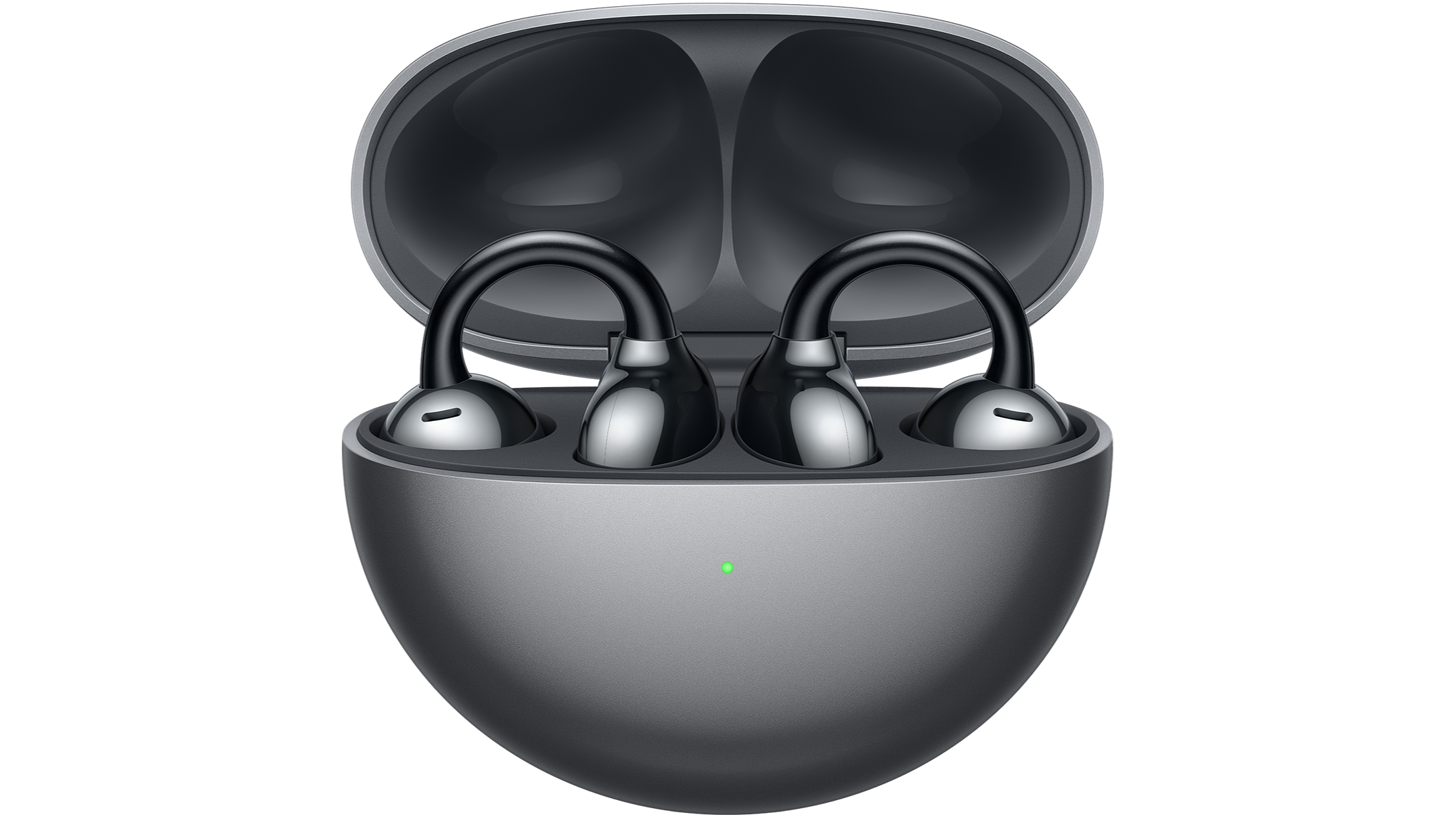
Huawei isn't afraid to stray from the norm. The Chinese brand has plenty of wireless earbuds in its arsenal, but for every standard-looking FreeBuds Pro 3 there is an odd-bean-shaped Freebuds 5. And then there's the brand new Huawei FreeClip.
The brand's latest innovation certainly stands out from even the wilder wireless earbud shapes we've seen. The FreeClip are an "open ear" design that looks very different and are designed more for awareness when used in sporty, outdoor or multi-tasking office settings. Huawei says that research has shown that a growing demographic of users wanted an "audio listening experience that had all the technological strengths of contemporary in-ear wireless headphones but allowed them to stay attuned to their surroundings."
First, the design. The Huawei FreeClip look like an amalgamation of a barbell piercing and ear cuff earrings – essentially, two round shapes connected by a stem, that clip into your ears sideways. Huawei says it analysed thousands of ear shapes to collect over 10,000 data samples to find the best ergonomic fit for all types of ears.

The connecting section (called the "C-bridge design") between the ball and the bean-shaped section is actually elastic, made of a high-performance nickel titanium shape memory steel wire. The earbuds apparently clamp firmly on your ear but won't cause pain, with Huawei stating they also measured the threshold of pressure on human ears to reach just the right amount of pressure. The "C-bridge design" features an "adaptive sensor that learns and adjusts the clamping force of the clasp mechanism, reducing the strain on the user’s ear cartilage", according to Huawei.
Why this design? It's meant to deliver a lighter, stable design with "all day" comfort compared to standard earbuds. Huawei also claims that this FreeClip structure counters the 'stethoscope' effect of the buds being stuck into ears, and should result mean less blocking of the ear canal and less hearing damage over time.
Next, we come to the "open acoustic design", which Huawei claims offers a more natural ambient sound without sacrificing audio quality or resulting in sound leakage. This open architecture prioritises being aware of your surroundings, while still ensuring you can hear your music clearly while out and about.
To that end, the FreeClip uses a high sensitivity dual magnet circuit driver with a reserve sound waves system that transmits sound into your ears in an optimum fashion while preventing sound leakage, claims Huawei. There are multiple EQ modes to further fine-tune the sound, while two mics and a voice pick-up unit handle wind noise-cancellation to deliver clearer voice calls.
We've encountered "open" designs before in the Sony Linkbuds, but they sport a vastly different design to the FreeClip. We're keen to see and hear how the FreeClip earbuds perform in comparison.

And finally, the new Huawei buds feature all the standard hallmarks you expect of a pair of competitive wireless earbuds. You get eight hours of battery on a single charge and a total of 36 hours with the charging case, a dust- and waterproof rating of IP54, and there's Bluetooth 5.3. Whether they come with multipoint capability (where you can be connected to and switch between two devices seamlessly) or not is to be confirmed, as is the full set of codecs supported.
The symmetrical design of the buds means the left and right buds are interchangeable and you can switch and configure any of the touch controls using the Huawei Life app. One thing to note is that there is no single tap control here – this is to stop any accidental taps, says Huawei.
The new Huawei FreeClip are unique-looking buds that will be available in two colour options, black and purple. Price? They cost a fairly reasonable £179.99 / €199, and are available to order now, shipping in the UK and Europe from late December. We're certainly interested to find out how this new design of earbuds fares during testing, both in fit and sound quality, and if it's a design gamble that will prove successful in the long run.
MORE:
Bose’s spatial audio tech is a nice idea for headphones but it’s too hit-and-miss
Read our Sony LinkBuds (WF-L900) review







